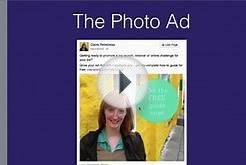 I am often asked how the different audience types (such as retargeting, in-market, interest and offline socio-demographic or purchase data, etc) fit together for campaign planning and what we should recommend to clients. Either through our Insights Services or Deep Dive (our audience discovery application), we are able to show clients the most statistically relevant audiences for their campaign and answer that question quantatively. But is there a simple framework to think about this before you delve into the numbers? We think so.
I am often asked how the different audience types (such as retargeting, in-market, interest and offline socio-demographic or purchase data, etc) fit together for campaign planning and what we should recommend to clients. Either through our Insights Services or Deep Dive (our audience discovery application), we are able to show clients the most statistically relevant audiences for their campaign and answer that question quantatively. But is there a simple framework to think about this before you delve into the numbers? We think so.
Match the purchase funnel
Marketers are used to visualising campaign strategy in terms of the purchase funnel. From our experience of running audience insights across more than a hundred clients in the last 2 years it is clear that the marketing objectives implicit in purchase funnel can provide guidance on the most appropriate audience types.
Intent phase: Retargeting and in-market
Starting near the bottom of the funnel and working up we know that 1st party audiences (i.e. the advertiser’s own site retargeting audiences) are by far the most likely to convert relatively soon. These 1st party audiences should always form the basis of a direct response plan, where the more granular the site segmentation the greater the performance. (Where no online path to conversion exists, e.g. for most CPG categories, the next best proxy is offline purchase transaction data.)
However, achieving conversion scale from retargeting pools alone is always a challenge. In-market audiences are typically the next most efficient audience type as they both capture category level and competitive product purchase intent, often on users that may not yet have visited the advertiser’s site.
Consideration phase: Endemic interest-based audiences
Direct response or brand response advertisers looking for further scale in less competitive segments should then look to their endemic interest-based audiences, i.e. auto audiences for auto advertisers, travel audiences for travel advertisers, etc. This isn’t surprising; as we’ve said before:
“Interest type content catches deeper product research by in-market users as well as early funnel activity and brand advocacy from enthusiasts”.
Interest phase: Lifestyle interests and affinities
As we consider the reach requirements of brand response and brand advertisers we now need to consider those audiences that represent the online lifestyle interests of user groups most relevant to them, i.e. everything else people do as they dip in and out of the purchase process. It’s important not to forget that customers have ongoing interests that define them independent of the product or services they may be considering. Some of these interests can be identified through experience and intuition (e.g. parenting audiences for family cars) but more often we expose the specific interests through Insights (e.g. families with young children and hard core gamers for DVD rental services).









